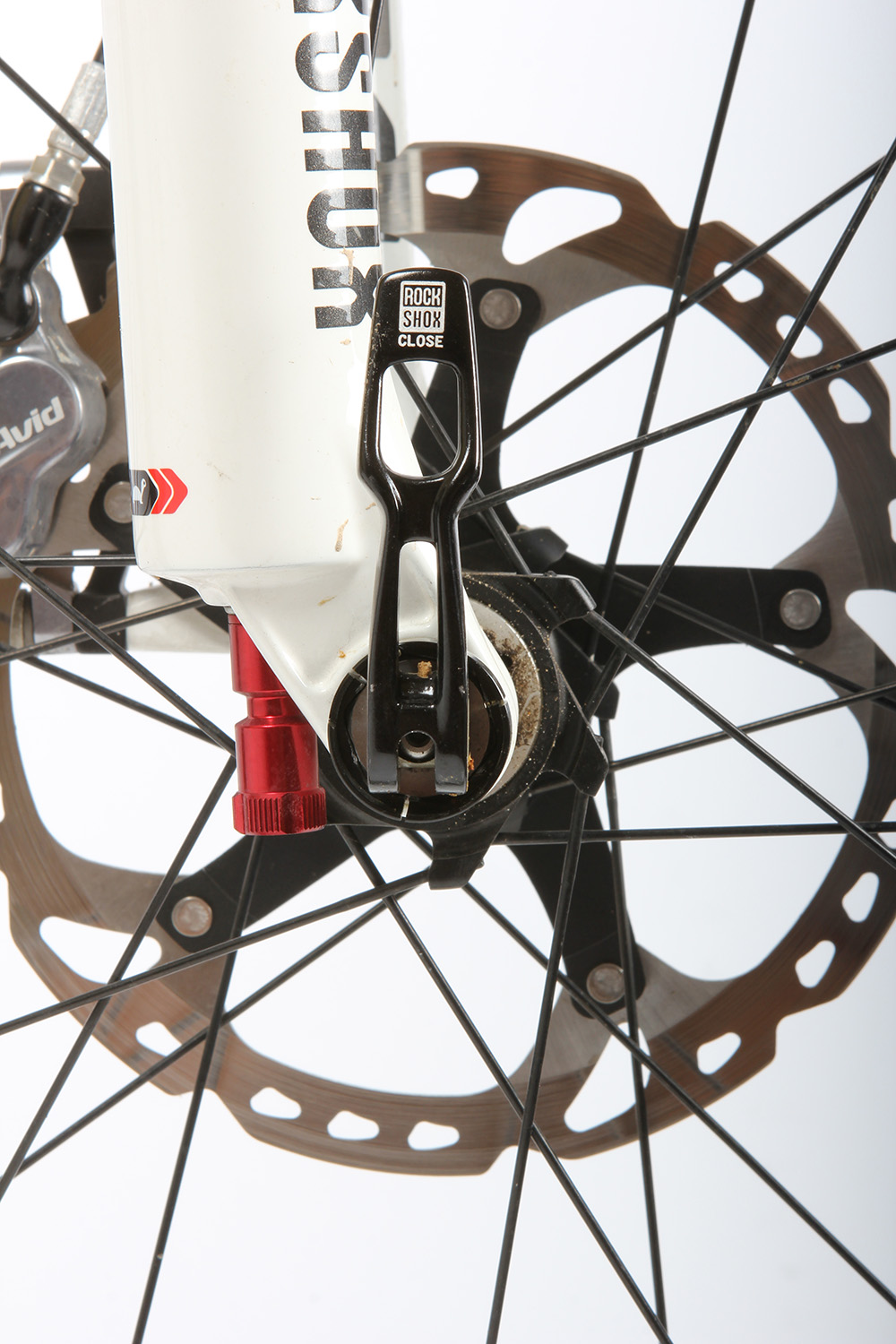“Are you sure about this? I mean, a carbon fibre crown on an all-mountain fork…”
We’ll admit it – there was something a little odd about fitting a 150mm-travel fork with a carbon fibre crown and steerer to the front of our Yeti test bike. After all, carbon forks are usually the domain of road or cross-country race bikes, not hard riding six-inch all-mountain sleds. But, as George Michael says, “you’ve gotta have faith”, and so we did.
RockShox have been utilising one-piece carbon crown/steerer assemblies on their high end forks since way back in 2002. Admittedly back then it was the lightweight SID that got the carbon treatment, but the Revelation World Cup has been available in this carbon format since 2011.

We’ll cut straight to the chase – this fork feels just as stiff, strong and confidence inspiring as any 32mm stanchioned, 15mm-axled all-mountain fork we’ve ever ridden. This test fork actually replaced a 2012 FOX 32 TALAS, so it’s easy to make a comparison between the carbon and alloy crown/steers, but we’d be lying if we claimed to have noticed a difference in stiffness between the two forks. After five minutes on the trail we completely forgot about the carbon bogeyman and got down to riding this fork just as hard as we would any other.
Weight is the obvious appeal of the Revelation World Cup. Ours clocked in at 1625g on the Flow Dream Crush (scales), but this figure moves closer to 1700g once you add in the expanding plug for the headset (you can’t use a standard star nut with a carbon steerer). All up, once we’d trimmed the steerer, we were a little surprised to find we only dropped about 100g from our bike. Sure, this is a decent amount of weight to shed, but the carbon kind of creates the expectation you’re going to drop kilos off your ride!

There are options galore with this fork. The Revelation is available with two different dampers and two different air springs (plus axle options – 15mm or quick release). In terms of of dampers, there’s an XX version or the Motion Control DNA RCT3 damper. The XX version gains a cool XLoc remote lockout, but the damper is less sophisticated and not as controlled when really pushed hard. We’ll prioritise bump performance over a remote lockout any day, so we selected the Motion Control RCT3 option. When it comes to air springs, you can choose from the lightweight new Solo Air system or the heavier (add 80g) Dual Position air spring, which gives you on-the-fly travel adjustability. To save weight, we went for the Solo Air spring.
The RCT3 damper is worth a quick explanation too. You’ve got three positions, controlled via the blue lever; an open position, a ‘threshold’ position (which adds compression damping to give a pedalling platform) and lastly a lock-out position which stiffens the fork’s action dramatically. In addition, there’s also independent low-speed compression adjustment with 15-clicks of control. This low-speed compression adjuster only affects the fork when the damper is in the open position.
Installation went smoothly, aided by a neat brake hose guide, easy-to-use Maxle axle system and well finished brake mounts. With the Solo Air spring, there’s very little setup needed. However, following the recommend air pressure guide on the back of the fork leg proved fruitless; we needed to run closer to 95psi to get enough support on bigger hits, while the chart recommended we run just 75psi. This isn’t the first time we’ve had to run well above RockShox’ recommended pressures either.

The most immediately impressive element of the Revelation’s performance is its buttery smooth responsiveness to every impact. Even with higher than recommended pressures in the air spring, the fork reacts to every little murmur in the trail surface. The Revelation scores RockShox’s Dual Flow rebound too, which keeps the fork lively at the top of the stroke, but slows the rebound down on bigger impacts. All this translates into more traction at the front wheel and less fatigue.

We did find the fork a little too eager to use all its travel on steep rollers and compressions in the trail, diving at inopportune moments for a few “oh-shit” experiences. We countered this tendency by adding low-speed compression damping to sit it up in its stroke more. In the end, we settled on about 6 or 7 clicks of low-speed and just left the damper there. This gave more support, though the fork’s action is still quite linear. Bigger, harder riders may find the fork’s tendency to use its travel generously takes a little bit of adapting to, bit with careful pressure selection and damping adjustment this is all manageable.
Impressively, there’s little reduction in small bump responsiveness even with the low-speed compression wound on, though the mid-stroke does feel a little harsher. We’ve rarely found the need to use the fork’s threshold or lock out positions, only occasionally activating the threshold option for road climbs.
It’s hard to comment on the fork’s long-term durability with just a couple of month’s use logged. The only issue we’ve encountered so far was easily fixed; our fork had a loose valve core and was losing air in between rides until we tightened it up. Otherwise all seems good – we’ve had nothing but positive experiences with RockShox forks in terms of bushing life and long service intervals over the past couple of years.
All up, this fork gets two thumbs up. It’s remarkably smooth, light and with more than enough tunability to get the performance right for you. Taking the carbon plunge turned out to be a good move!

